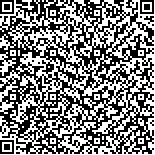| 本文已被:浏览 2502次 下载 2522次 |

码上扫一扫! |
|
|
| 基于线粒体COI和16S rRNA基因研究3个地理群体黑龙江河蓝蛤的遗传多样性 |
|
孙 超1,2, 刘志鸿1, 杨爱国1, 周丽青1, 吴 彪1, 严加坤1,2, 侯 丫1,2, 董春光1,2
|
|
1.农业部海洋渔业可持续发展重点实验室, 中国水产科学研究院 黄海水产研究所;2.上海海洋大学 水产与生命学院
|
|
| 摘要: |
| 采用通用引物对辽宁盘锦、辽宁大连、山东日照的3 个地理群体黑龙江河蓝蛤(Potamocorbula amurensis)COI 和16S rRNA 序列进行扩增、测序分析, 得到30 条658bp 的COI 基因部分序列和27 条450 bp 的16S rRNA 基因部分序列。其中COI 和16S rRNA 基因部分序列T、C、A、G 和A+T 的平均含量分别为45.4%和32.0%、13.5%和13.3%、20.7%和29.3%、20.4%和25.3%、66.1%和61.3%, AT 含量高于GC 含量, 这与其他软体动物门动物的COI 和16S rRNA 的观测结果相近。COI 和16S rRNA 分别检测到了24 个单倍型、43 个核苷酸多态位点和9 个单倍型、19 个核苷酸多态性位点。AMOVA 分析表明, 3 个群体间COI 和16S rRNA 部分基因总遗传分化系数分别为Fst = 0.0090(P<0.001)和Fst =0.0674(P<0.001), 群体内遗传分化远大于群体间、群体内存在较高的遗传分化。用NJ 法构建分子进化树, 3 个地理群体的黑龙江河蓝蛤聚为一个族群, 有少数个体和其他群体的个体聚在一起。 |
| 关键词: 黑龙江河蓝蛤(Potamocorbula amurensis) 线粒体 16S rRNA COI 遗传分化 |
| DOI:10.11759/hykx20130603002 |
| 分类号: |
| 基金项目:国家科技基础条件平台项目; 国家科技部基础工作专项(2013FY110700) |
|
| The genetic diversity of three populations of Potamocorbula amurensis based on mitochondrial COI and 16S rRNA gene |
|
|
| Abstract: |
| Mitochondrial COI and 16S rRNA gene fragments of three wild populations Potamocorbula amurensis were amplified with universal primers; the PCR products were sequenced, and 658 bp and 450 bp nucleotide sequences were obtained. The T, C, A, G and A+T contents in the fragment (COI/16S rRNA) were 45.4%/32.0%, 13.5%/13.3%, 20.7%/29.3%, 20.4%/25.3%, and 66.1%/61.3%, respectively. The AT content was higher than the GC content. The phenomenon was similar to the results of other mollusca. 24 haplotypes and 43 polymorphisms were defined among COI from three populations. Nine (9) haplotypes and 19 polymorphisms were defined among 16S rRNA from three populations. The fixation indices (Fst) analyzed by AMOVA were totaled to Fst=0.0.0090 (P<0.001) and Fst=0.0674 (P<0.001), showing that the genetic fixation intra-populations was larger than inter-populations. It indicated that significant genetic fixation existed among the three populations. The Neighbor-joining (NJ) phylogenetic trees were made from the three populations of P. amurensis, showing that the three populations might have originated from one clade, while a small number of individuals may be mixed in otherclades. |
| Key words: Potamocorbula amurensis 16S rRNA COI Genetic diversity |
